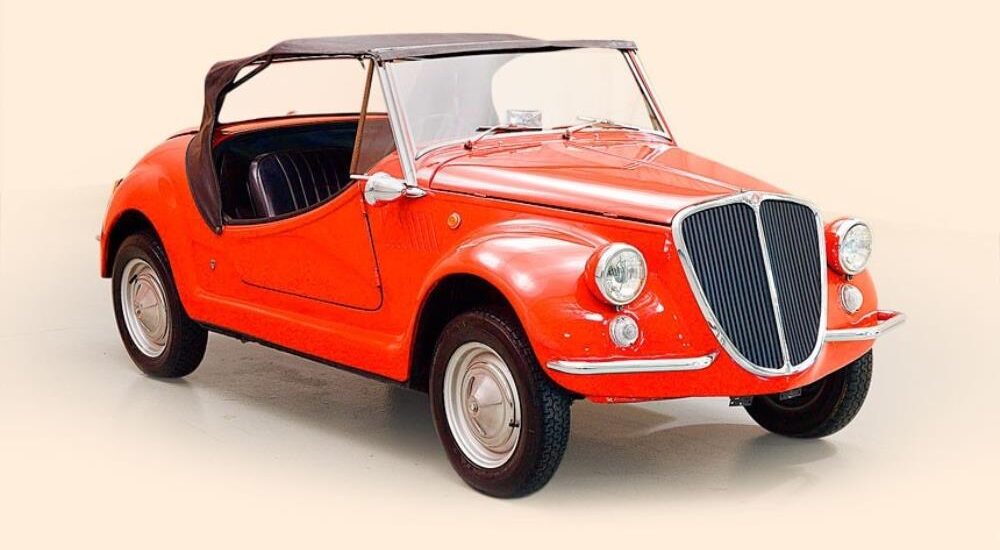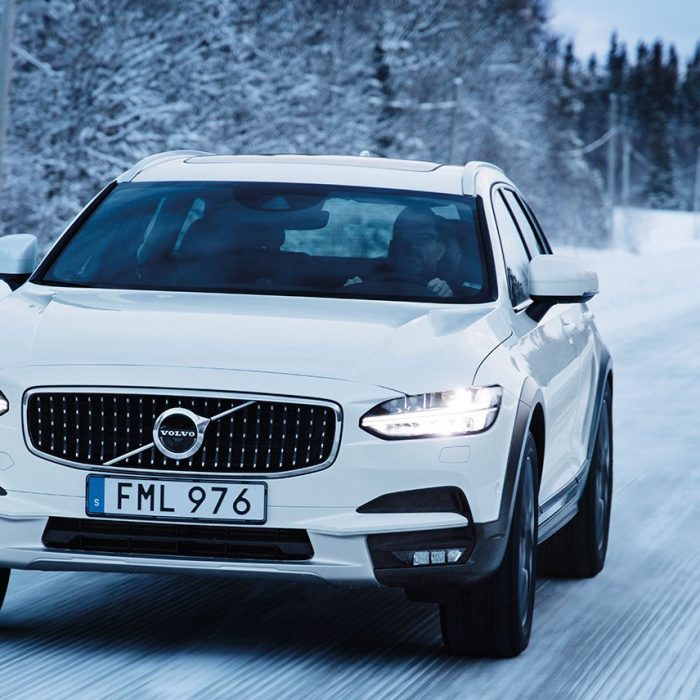No, the renowned multinational corporation Fiat S.p.A. didn’t roll out this particular car from its production line. Instead, it emerged from the workshop of Signor Alfredo Vignale, utilizing components from the popular Fiat Cinquecento. Nestled in the city of Grugliasco, adjacent to the Fiat Mirafiori plant, this artisanal creation was crafted between 1967 and 1971. Constructed painstakingly, in small batches, it represented a fusion of artistry and automotive engineering—handcrafted with precision. Concurrently, the Vignale workshop also crafted limited runs of vehicles based on the Fiat 850, Fiat 124, and Fiat 125 models.

The cockpit of the car is simple and unsophisticated: nothing superfluous.

The seats, however, are quite comfortable and are also not afraid of moisture.

The number of instruments on the front panel is kept to a minimum: a single dial contains everything you need.
Alfredo Vignale’s journey began in 1913 in Grugliasco, where he apprenticed at the renowned Stabilimenti Farina bodywork firm. Establishing his own venture in 1948, Vignale primarily catered to bespoke requests from major Italian and international automakers. From exhibition models destined for global auto shows to bespoke creations for discerning private clients, Vignale’s craftsmanship garnered acclaim across the automotive industry. Notable clients included Cisitalia, Ferrari, Volvo, Lancia, Alfa Romeo, Maserati, and, of course, Fiat.

The front design is dominated by a large and eye-catching false radiator trim. Behind it, however, no radiator is found – and there is none on the car at all, neither in front nor in back.

This is what the decorative false radiator actually hides behind itself.
By the early 1960s, Alfredo Vignale felt it was time to transition from subcontracting to creating his own automotive marque. Thus, he relocated his operations closer to the Mirafiori plant, facilitating logistical efficiency. Initially, Vignale worked off the Fiat 850 platform, fashioning sleek open and closed body styles. With the advent of the Fiat 124 and Fiat 125 models, he designed striking sports bodies—Evelyne and Samantha, respectively. And on the chassis of the diminutive Fiat 500 model (Cinquecento), Vignale crafted this charming two-seater open-top vehicle.

The small motor fits comfortably under the trunk lid. However, the slots on this cover clearly indicate that underneath there is an engine compartment, and not a trunk at all.

The rear bumper is completely devoid of any practicality – as, indeed, are the front “halves”. The tail lights, for their part, are large and clearly visible.
Despite the Fiat 500’s rear-engine layout, Alfredo Vignale adorned his creation with a distinctive false radiator grille—a nod to pre-war aesthetics, reminiscent of models from Lancia and Fiat’s Balilla. Behind this ornamental grille lay a vertically positioned spare wheel, lending the car an air of sophistication. Curved side doors, reminiscent of vintage British tourers, added to its allure, though lacking drop-down windows. The flat windshield, while not curved for design coherence, featured triangular vents on the pillars to deflect spray in inclement weather. While the car’s practicality was limited, its aesthetic charm was undeniable—an embodiment of Vignale’s artisanal vision.

It would be quite possible to do without doors on such a small car. But they still exist – however, there are no handles on them at all.

The wheel caps probably should have been made spoked for greater effect, but this would have significantly increased the cost of the car.
Indeed, this petite car couldn’t boast much in terms of practicality. It might be seen as the whimsy of a master—especially considering its name, which translates from French as “mischief-maker” or “rascal.” However, such a lighthearted view is challenged by the fact that it outstrips its coupe-bodied “sisters” significantly in terms of production volumes. While Samantha and Evelyne saw just over a hundred units each, the Vignale Gamine surpassed them with around three hundred units destined for the British car market alone. In total, it’s estimated that somewhere between 400 to 450 were produced. (Unfortunately, more accurate data hasn’t been preserved.)

This example was clearly intended for use in countries with left-hand traffic.

The profile of the car is dashing – both with the top up and with the top down. However, in both cases there is practically no protection from external conditions.
Despite its undeniable charm, the car had its drawbacks. Firstly, it only offered two seats—compared to the four of the base Fiat 500—and it was notably slower. Secondly, its handling left much to be desired. The relatively high cost of the car also played a part—demand fell short of expectations, ultimately leading Alfredo Vignale to halt automotive production altogether. In the autumn of 1969, his entire business was acquired by Alejandro de Tomaso, who intended to produce his Pantera model on these premises. Tragically, by the end of November, just as the ownership transfer process concluded, Signor Alfredo died in a car accident, crashing in his personal Maserati. Thus, another chapter in the illustrious history of Italian bodywork came to a close.
The specimen featured in our illustrations is right-hand drive. It was commissioned by the London branch of the company and acquired its first owner there. Documents suggest the car was purchased in 1969 for £645. However, the following year, the owner relocated to Karachi, Pakistan, taking the car along. From there, it journeyed via Melbourne, Australia, to Hawaii, landing in Honolulu. Despite its extensive travels, this particular specimen arrived in remarkably good condition.

“Gamine” is still “boy”. And here are the “girls”, his sisters: Samantha…

… and Eveline
Photo: Sean Dugan, www.hymanltd.com
This is a translation. You can read the original article here: Шалунишка: Fiat Vignale Gamine 1969 года в рассказе Андрея Хрисанфова

Published May 02, 2024 • 5m to read





